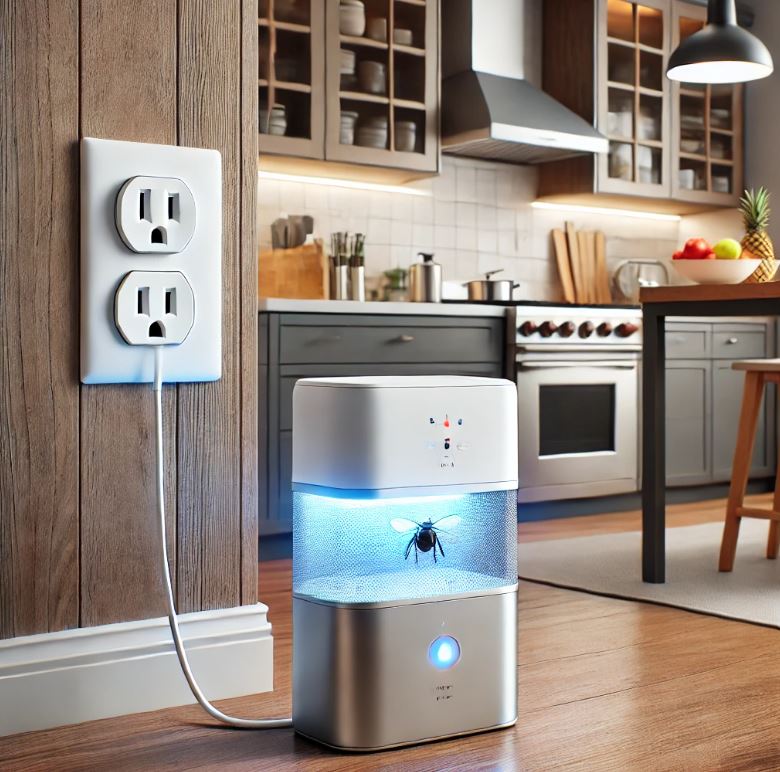I'm a participant in the Amazon Services LLC Associates Program, an affiliate advertising program designed to provide a means for me to earn fees by linking to Amazon.com and affiliated sites.
Indoor fly traps are a convenient solution for managing fly infestations in homes. However, a common concern is whether these traps also attract other types of insects. Do indoor fly traps attract other insects? This article will delve into the effectiveness of indoor fly traps and their potential to attract various insects.
Key Takeaways
- Effectiveness: Indoor fly traps are designed primarily to attract flies but can also attract other flying insects.
- Variety of Insects: These traps can attract fruit flies, gnats, moths, and sometimes even mosquitoes.
- Best Practices: Placement and maintenance are crucial to ensure effectiveness and prevent attracting unwanted insects.
How Do Indoor Fly Traps Work?
Attractants and Mechanisms
Indoor fly traps use a combination of visual and olfactory cues to lure flies and other flying insects. Common attractants include UV light, which mimics natural light, and bait that emits scents appealing to flies. These attractants draw insects into the trap, where they are captured on sticky surfaces or by electric grids (House and Home Online) (Trappify).
Types of Traps
- UV Light Traps: Use UV light to attract flies and other insects. Once drawn to the light, insects are trapped on glue boards or zapped by electric grids.
- Sticky Traps: Utilize adhesive surfaces to capture insects that land on them.
- Container Traps: Feature a small opening that insects enter but cannot escape from, often combined with a bait attractant (House and Home Online) (Trappify) (StrongMocha).
Do Indoor Fly Traps Attract Other Insects?
Types of Insects Attracted
While indoor fly traps are specifically designed to attract flies, they are also effective against a variety of other flying insects. This includes:
- Fruit Flies: Attracted by the same bait used for common house flies.
- Gnats and Fungus Gnats: Drawn to the light and scent-based attractants.
- Moths: Particularly those that are active at night and attracted to light.
- Mosquitoes: Some traps can attract and capture mosquitoes, especially those designed with dual-spectrum UV lights (Trappify) (StrongMocha).
Factors Influencing Attraction
The specific attractants used in a trap will determine the range of insects it attracts. For instance, traps that use light are more likely to attract a broad spectrum of flying insects, while those using specific baits might attract certain species more effectively. Additionally, the placement of the trap can influence its effectiveness in capturing various insects (StrongMocha) (Texas A&M Agrilife Extension Service).
Recent Developments in Fly Trap Technology
Advances in Design
Recent innovations in fly trap technology have focused on increasing the range of insects that can be captured while maintaining safety and environmental friendliness. Modern traps often feature:
- Enhanced UV LED Lights: More effective at attracting a broader range of insects.
- Eco-Friendly Materials: Non-toxic and environmentally safe attractants and adhesives.
- Multi-Purpose Designs: Some traps now double as night lights or air purifiers, increasing their utility in the home (StrongMocha).
Top Experts and Entities in the Field
Experts
- Dr. Sonja Thomas: An entomologist specializing in pest control, Dr. Thomas offers insights into the behavior of various flying insects and the effectiveness of different traps.
- PestWorld: Provides comprehensive guides on pest control technologies and best practices (House and Home Online) (Trappify).
Entities
- Safer Brand: Known for innovative and effective indoor fly traps.
- Zevo: Specializes in traps that attract and capture a wide range of flying insects using dual-spectrum UV light (StrongMocha) (Texas A&M Agrilife Extension Service).
Conclusion
Indoor fly traps are highly effective at attracting and capturing not only flies but also other flying insects such as fruit flies, gnats, and moths. Understanding the mechanisms behind these traps and their attractants can help in choosing the right product for your needs. Proper placement and maintenance are key to maximizing their effectiveness and ensuring a fly-free home.
For more home improvement tips, check out our articles on The Best Window Air Conditioner for Large Room, Best Desk Fan: Top Picks, and Best Window AC Unit 6000 BTU.
Author: HappyHomeNerd
As an expert in home improvement and pest control solutions, HappyHomeNerd provides well-researched and practical advice to help you maintain a comfortable and pest-free living environment.
